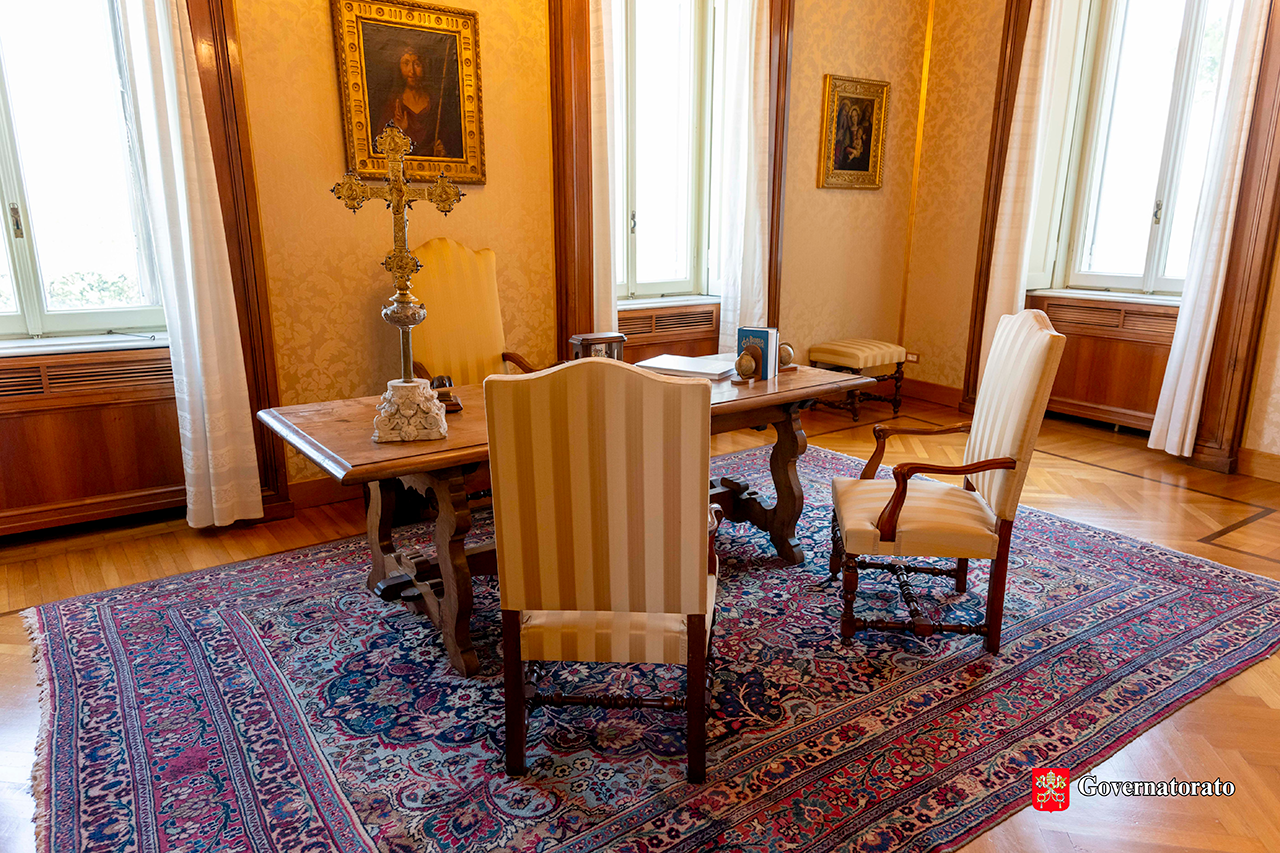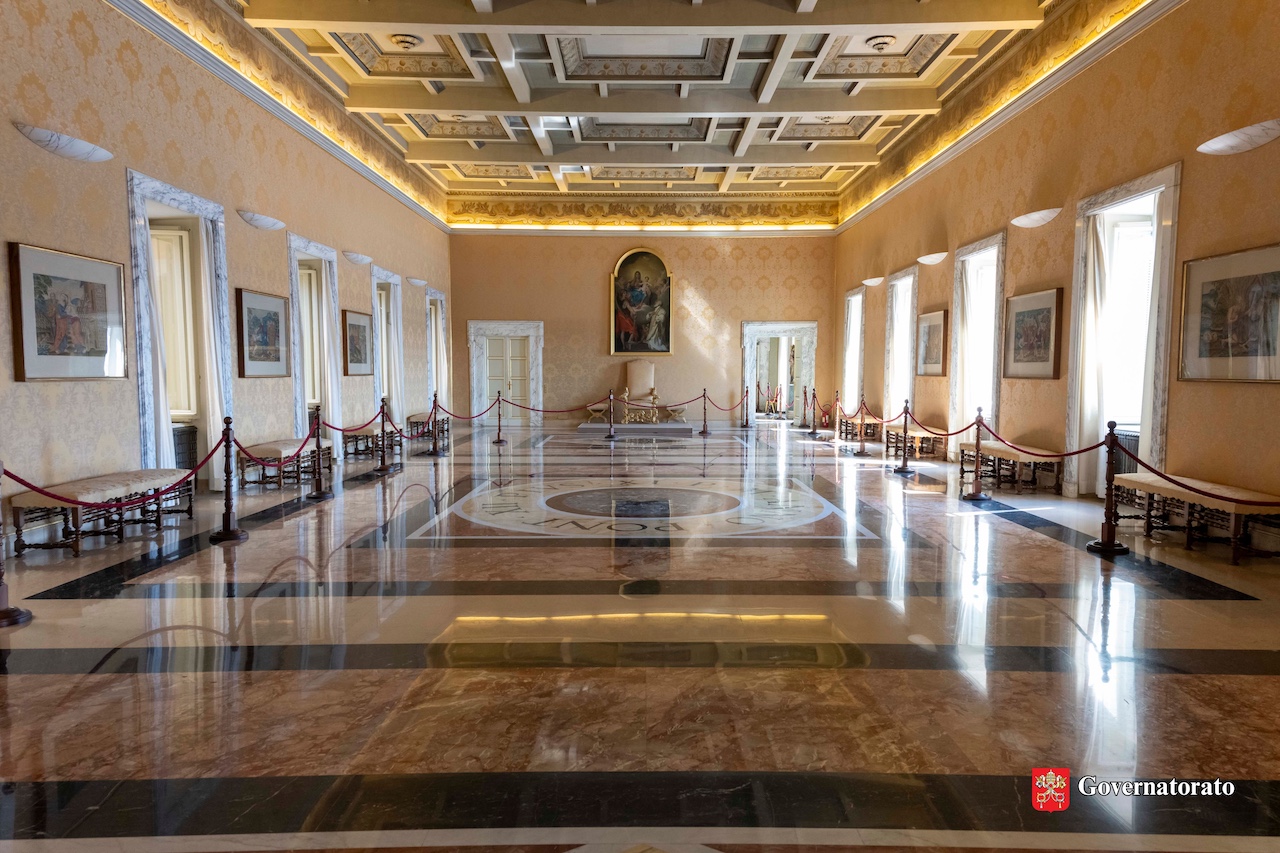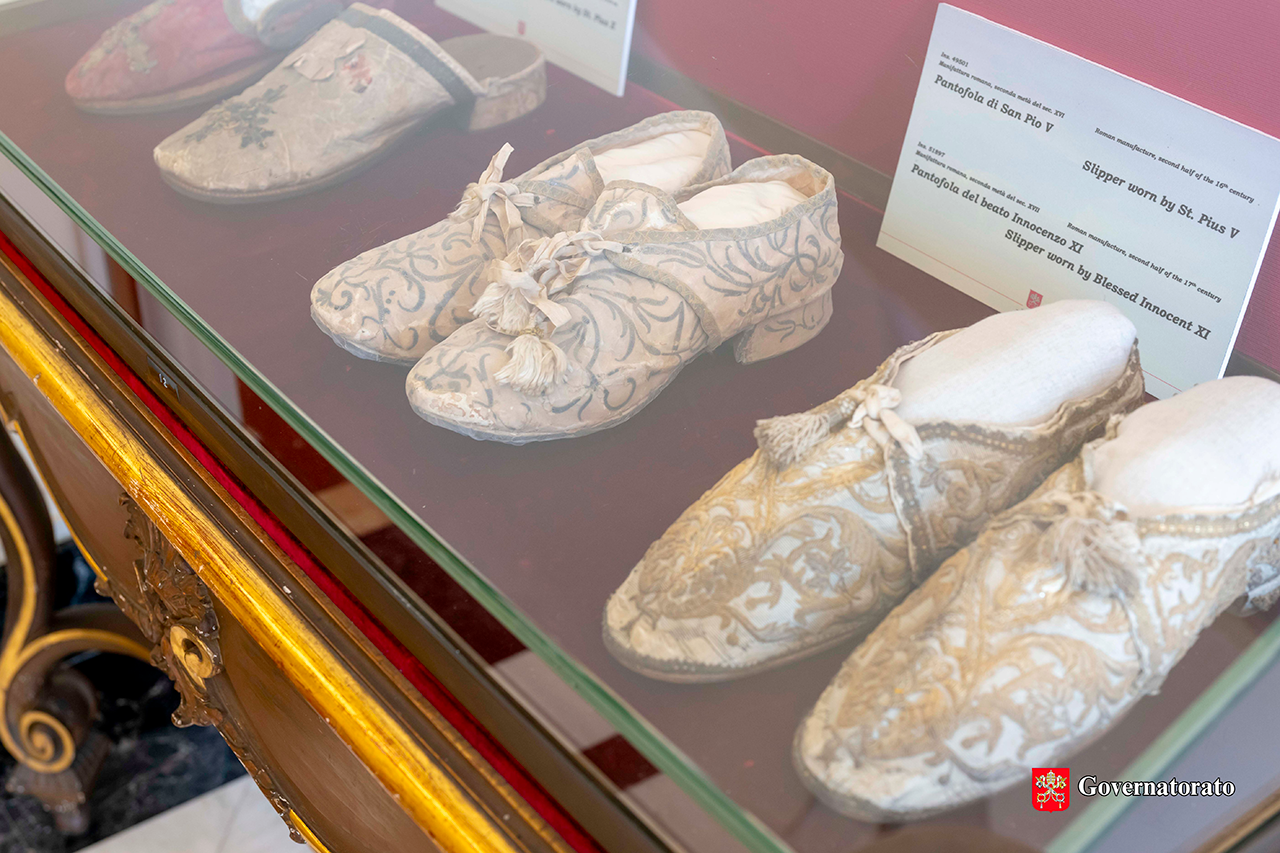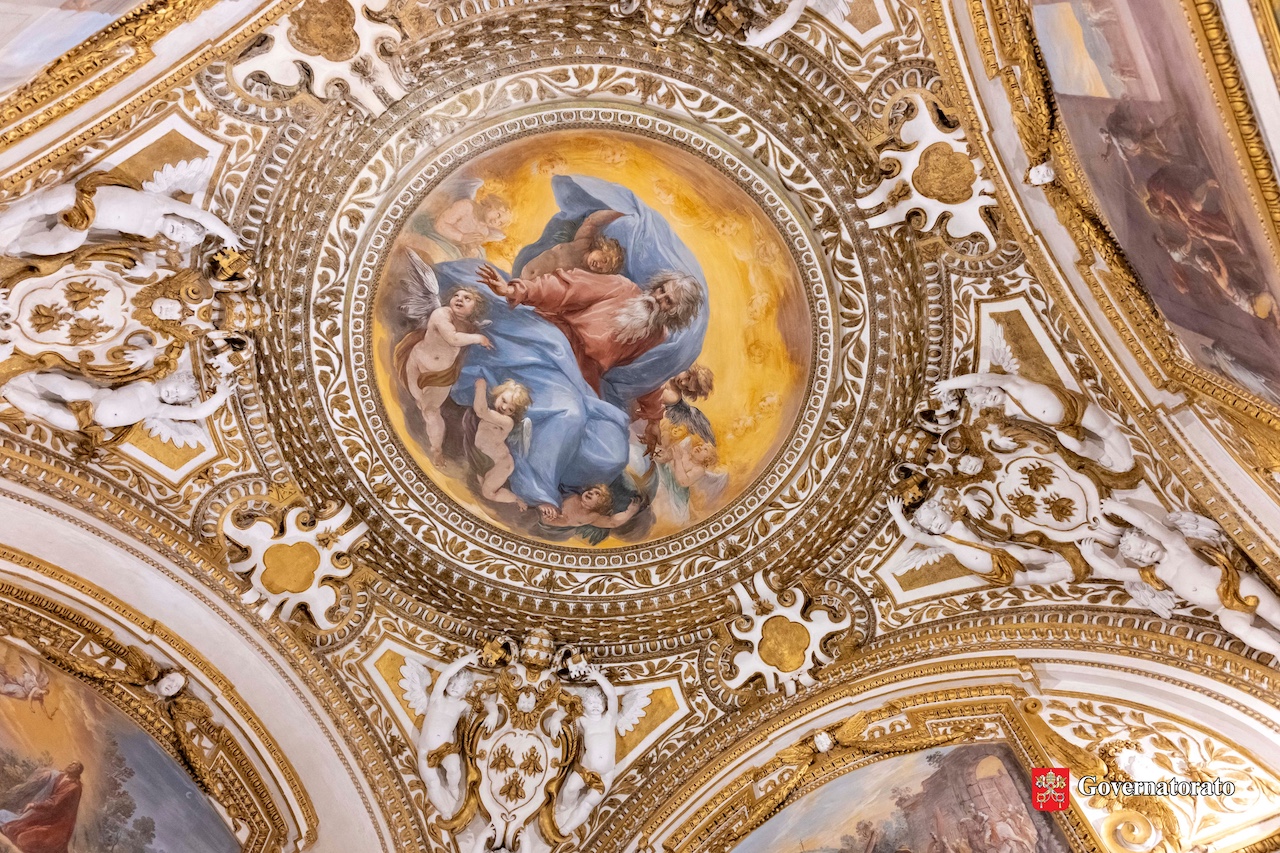Castel Gandolfo: from Imperial Residence to Pontifical Villa
Domitian’s Villa was located on the western side of the hill, overlooking the Tyrrhenian Sea. The slope had been cut into three large terraces leading towards the sea. The first terrace, the highest one, was where the servants lived. It had bathrooms and cisterns that were fed by the springs of Palazzolo – on the opposite side of the lake – via three aqueducts, partly still in existence, that supplied water to the Pontifical Villa and the residents of Castel Gandolfo. The middle terrace was supported by a massive substruction wall, interrupted by four nymphae with an alternating rectangular and semicircular pattern. It was the site of the imperial palace and the theatre. The lower terrace housed the cryptoporticus, the large covered corridor of the Emperor which was originally 300 metres long. This terrace split further into several lower terraces, mostly composed of gardens. The hippodrome was located on one of these terraces.
Domitian, the “bald Nero”, as Giovenale referred to him, chose this residence, so abundant in natural beauty, lavish buildings and works of art, and organized to handle the winter, as his almost permanent home.
When Domitian died, the Villa was inherited by his successors who preferred to live elsewhere. Hadrian (117-138) spent a brief period there as he waited for his Villa near Tivoli to be completed, and Mark Aurelius (161-180) took refuge there for a few days during the rebellion of 175. Some years later, Septimius Severus (193-211) settled castras of his most faithful Parthian legionnaires in the far southern part of the Villa, where they established a camp with their families.
The Imperial Villa underwent a period of decline as its monuments, were systematically stripped of their works of art and precious ornamentation, due to the demand for marble and bricks for new constructions of homes for the early settlers of Albano. Another settlement, composed mainly of farmers, was established north of the Villa on the ridges of the lake, towards “Cucuruttus” (what is now Montecucco), which much later became today’s Castel Gandolfo.
Emperor Constantine (306-337), who had removed the turbulent Parthian Legionnaires and their families, from the territory, conferred on the Basilica of St John the Baptist, today the Cathedral of Albano, the “possessio Tiberii Caesaris”: Domitian’s villa.
With the exception of some census records and patrimonial deeds that refer to these lands, there is no historical documentation of the area until the 12th century. Meanwhile, the spoliation of marble and works of art for other constructions continued for a long time. In the 14th century, the area was regularly plundered for marble needed for the construction of the Duomo of Orvieto.
Around 1200, the Gandolfi family of Genoa built their family castle on the hill, perhaps over the ruins of the ancient city of Albalonga, giving the name to today’s Castel Gandolfo. The cliff was a square fortress at the top of the hill, with tall crenelated walls and a small courtyard that still exists. It was surrounded by a mighty bastion that made it almost impregnable. A few decades later, it became the property of the Savelli family, who through ups and downs, kept it for three centuries.
In 1596, during the Pontificate of Clement VIII Aldobrandini (1592-1605), the Apostolic Chamber took possession of Castel Gandolfo and of Rocca Priora, with the Bull known as Congregazione dei Baroni, removing them from the Savelli family, who had refused to pay a debt of 150,000 ecus (currency). When part of the debt was later paid, Rocca Priora was returned to the Savelli family, but Castel Gandolfo was declared an inalienable patrimony of the Holy See and definitively incorporated with a consistorial decree, dated 27 May 1604, to the temporal domain of the Church.
At the request of the community of Castel Gandolfo, Paul V Borghese (1605-1621), provided the town and the rocca with abundant water by restoring the aqueduct that carried water from the Malafitto springs, today’s Palazzolo. Moreover, he improved the health of the area, by reclaiming the marshlands around Lake Turno, as recalled by a plaque in front of the Pontifical Palace.
Urban VIII Barberini (1623-1644), who had enjoyed his stays at Castel Gandolfo when he was Cardinal, was the first Pope to spend his holidays at the residence, in the spring of 1626, after the completion of refurbishment and extension works to the palace. The works had been entrusted to Carlo Maderno, who was assisted by architects, Bartolomeo Breccioli and Domenico Castelli. An additional wing facing the sea was added to the palace and the left section of the current facade, leading to the front entrance gate. A modest-sized garden with paths bordered by myrtle hedges was planted inside the palace (Garden of the Moor), which still exists today true to its original design. Simone Lagi, from Florence, was commissioned to decorate the private chapel, the adjacent oratory and the sacristy with frescoes. Urban VIII also added two evocative tree-lined streets known as “Galleria di sopra” and “Galleria di sotto” that flank Villa Barberini and connect Castel Gandolfo to Albano.
Alexander VII Chigi (1655-1667) completed the construction of the Pontifical Palace with a new facade, on the square and a wing stretching towards the sea, with a large gallery, designed by Bernini.
With the aim of providing the property with space that was more suitable to walks, given the insufficiency of the small garden of Urban VIII, Clement XIV Ganganelli (1769-1774) expanded the residence by acquiring the adjacent Villa Cybo. In 1717, when he was still Auditor General of the Apostolic Chamber, Cardinal Camillo Cybo had the architect, Francesco Fontana, surrender a building he had built for himself, so he could use it as his “noble home and villa” He later acquired a plot of land of about three hectares in front of the construction site, adjoining on top with the borgo of Castel Gandolfo and below towards the sea through the “Galleria di sotto”. He transformed it into a splendid garden, richly adorned with precious marbles, statues and fountains. Unfortunately, this sumptuous Villa had a big flaw: the palace and the garden were separated by a public road, “Galleria di sotto”. The Cardinal had plans to connect them through an overpass on the main floor of the garden, but the project never materialized. We do not know whether it was due to a lack of time or money. After the death of Cardinal Cybo in 1743, the Villa passed on to his heirs, who sold it to the Duke of Bracciano, Livio Odescalchi. Clement XIV later acquired it for the same price of 18,000 ecus.
With the end of the Papal States in 1870, the papal residence of Castel Gandolfo went through a period of decline and oblivion that lasted 60 years. In fact, even though the Law of the Guarentigie had ensured that the Palace of Castel Gandolfo “with all its amenities and jurisdiction” enjoyed the same immunity as the Vatican and the Lateran, after the Capture of Rome, the Popes no longer set foot outside Vatican.
It was not until the Lateran Treaty between the Holy See and Italy (1929), which put an end to the thorny “Roman Question”, that Castel Gandolfo became a papal summer residence once again. During the negotiations, the possibility of making Villa Farnese of Caprarola or Villa Doria Pamphilj on the Janiculum Hill, papal residences too, was also explored. However, in the end, historical tradition prevailed. The expansion of the area that comprises today’s Pontifical Villas was completed with the acquisition of the Villa Barberini complex, where newly designed gardens were installed, among them, the Belvedere which deserves special mention. The Villa had been built by Taddeo Barberini, the nephew of Urban XVIII, who had acquired lands and vineyards in 1628, that corresponded to the central terrace of the Domitian residence. In 1631, he had also acquired the property of Msgr. Scipione Visconti, which included a small building that was later transformed and expanded, probably on the basis of a design of Bernini. Much later, at the beginning of the following century, an elegant fence was built in front of the Palace, ingeniously placed to accommodate the passage of cumbersome equipment, despite the narrow space.
After 1929, major reinforcement and renovation works were made to the Pontifical Palace, in order to make it more suitable to its new demands, and to connect the three villas (Garden of the Moor, Villa Cybo and Villa Barberini) by an overpass, linking the Barberini estate with Villa Cybo and with the loggia that leads to the Palace above the public road, on the Arch of the Ancient Roman Gate.








